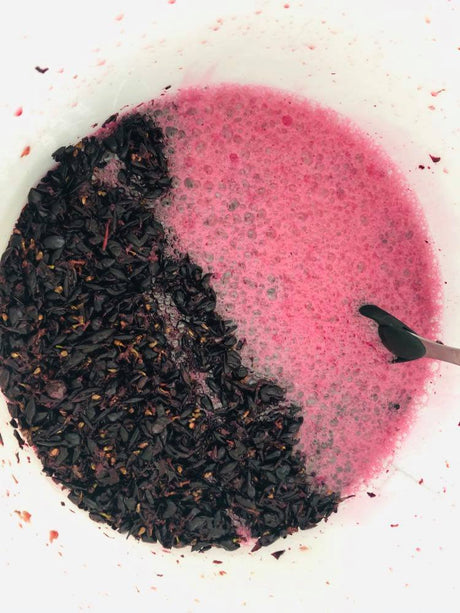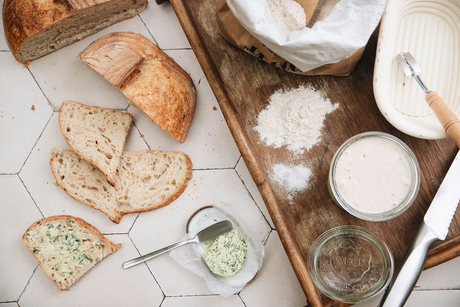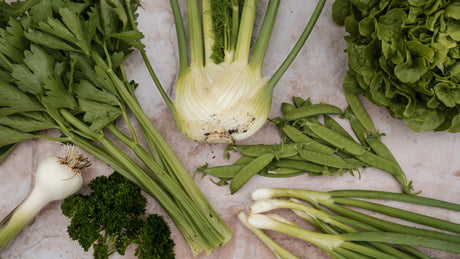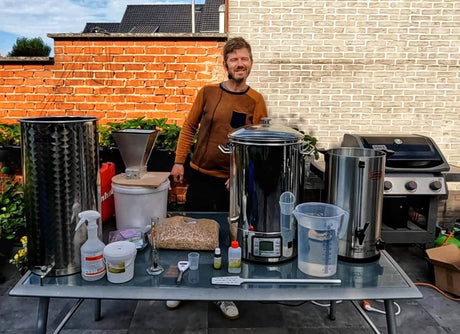comfrey : nutrient in the vegetable garden
Comfrey is more than a plant that you often find on railway embankments. This 'old-fashioned' plant can be used medicinally and can serve as a nutrient for your vegetable garden. The large hairy leaves contain the three macro nutrients N (nitrogen), P (
phosphorus ) K (potassium = potassium) that you also find in vegetable garden fertilizers that you can buy everywhere. Get a
comfrey plant once and you can propagate them annually. Use
comfrey from the flowering period for your fruit bushes, fruit trees and fruit crops. For
potatoes , cabbage crops, leafy vegetables and greedy tubers such as
celeriac and
beetroot , you can start using
comfrey after planting. Root vegetables and legumes do not benefit from these nutrients.

Order
comfrey on this site
comfrey : nutrient in the vegetable garden - comfrey manure
You make
comfrey slurry as follows:
- Wear long pants, sweater and gloves. You can get skin irritation from comfrey .
- Fill a bucket with comfrey leaves, don't stuff them in the bucket but press them down a bit and place a stone on top
- Fill the bucket with water and place the comfrey leaves just under water (as if you were making soup with vegetables).
- When the leaves are almost dissolved (3 to 6 weeks), a brown syrupy substance remains. The smell is terrible, this is very normal, good even.
- Pour the comfrey through a sieve again. If your watering can has a spray head, it works easier.
- Make a ratio of 10% comfrey manure / 90% water and use in the vegetable garden.
TIP: When you work with a container with a tap at the bottom, you can simply fill the top with leaves, stones and water.
For example,
comfrey manure has an NPK of 8-3-20, very strong to use directly in the garden, that's why you add so much water to it. N8 (nitrogen) ensures beautiful leaf growth in your plants, P3 (
phosphorus ) helps your plants in their fight against diseases and K20 (Potassium), ensures flowering, beautiful tubers and full fruits. In addition,
comfrey contains free manganese and calcium, two super important building blocks in plants.

comfrey : nutrient in the vegetable garden - Mulching with comfrey
A second way to use
comfrey is to use the leaves as
mulch . A mulch layer is a layer of organic material (in this case
comfrey leaves) that covers your soil. The purpose is to feed the soil organisms in your important top layer of 15-20 cm from above. Mulch also keeps your top layer nice and moist as it holds moisture more in the soil than bare soil does. As a bonus, you will also get less weeds as the dormant (weed)
seeds in your soil are also shielded from light. Do avoid letting the
comfrey leaves get into the soil, as they decompose there they need nitrogen and we prefer to keep that for our plants.
 Comfrey
Comfrey can be found in nature along railway embankments, canals and forest edges. You can also order a pot of
comfrey on this site. After a year you can divide the root system and plants and plant them again.
Comfrey grows very easily, makes a very deep root system and likes a place in a sunny to half sunny place. Please note!
Comfrey manure throws the seeds on the ground after flowering and has a tendency to proliferate. You can avoid this by pruning flowers when they show signs that they are starting to die off.
comfrey : nutrient in the vegetable garden - comfrey manure as spray
You can also spray
comfrey manure on your leaves. It slows down mildew.
comfrey : nutrient in the vegetable garden - comfrey activates your compost heap
Comfrey leaves can also be used as
a compost activator. Especially when your
compost contains a lot of brown material (branches and leaves). Place a double layer of
comfrey leaves on your
compost heap and sprinkle some garden soil on top. The quickly rotting leaves leave behind a lot of nitrogen. This nitrogen will work together with the bacteria and soil organisms present to start or speed up the
composting process of your brown material.
Good luck!
 Order comfrey on this site
Order comfrey on this site

 Comfrey can be found in nature along railway embankments, canals and forest edges. You can also order a pot of comfrey on this site. After a year you can divide the root system and plants and plant them again. Comfrey grows very easily, makes a very deep root system and likes a place in a sunny to half sunny place. Please note! Comfrey manure throws the seeds on the ground after flowering and has a tendency to proliferate. You can avoid this by pruning flowers when they show signs that they are starting to die off.
Comfrey can be found in nature along railway embankments, canals and forest edges. You can also order a pot of comfrey on this site. After a year you can divide the root system and plants and plant them again. Comfrey grows very easily, makes a very deep root system and likes a place in a sunny to half sunny place. Please note! Comfrey manure throws the seeds on the ground after flowering and has a tendency to proliferate. You can avoid this by pruning flowers when they show signs that they are starting to die off.







